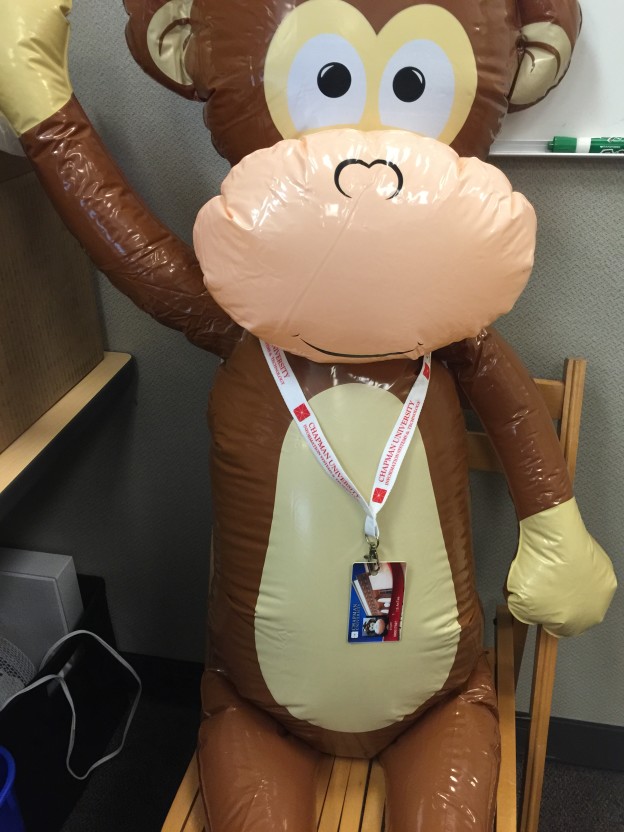A post in the series My Year in IT
For me, working in IT has required a healthy sense of humor.
There is the easy, obvious humor that comes from working in an environment that is straight out of an Office episode. That leads to silly shared memes, bad photoshopping of each other’s headshots, and the occasional inflatable monkey at my desk. But what it really comes from is that in IT we are working in teams and not solo.
From my years doing historical research in the solitude of an archive, I’d become used to working through problems myself, and developed workflows for my personal productivity that rarely hinged on others. My first few days at an IT cubicle were a completely different experience. Paper planes whizzed over walls and news would spread across an entire hall of offices simply by having an audible conversation. I soon learned how valuable that ‘spread’ of overheard conversations would be, as others in nearby cubes who heard me speak of a problem on the phone might soon pop in and add their two cents to the issue. And among team members, it became apparent that humor is necessary to diffuse stress and to create strong working bonds with each other (or just to revel in the fact that it is Friday and almost the weekend!)
Humor also comes in handy when one realizes that a problem cannot be fixed. There is a mantra in IT that “anything is possible with enough resources” and this is usually said in a preface to an explanation of why that desired thing is not possible. It may be an unplanned system outage, the inability to modify out-of-the-box software, or the impossibility of churning out an immediate web programming change. Grappling with finite resource limits is maddening, especially when one is aware of the frustration that users feel when something is not working as expected. Enter, humor. These moments are not the laugh-out-loud silliness of youtube mishaps, but are times when one has to smile and forge ahead to provide a workaround, or reach out and communicate as clearly as possible what the impact of the problem/outage/malfunction will be.
Perhaps most importantly, I’ve needed to keep a sense of humor about myself. Despite knowing all that I know about technology there are days that my printer isn’t working, times when I need a password reset, and moments when it feels like every click yields an error message. It is then that I get most exhausted by the tangle of spaghetti powercords in my bag that seem to include every single one except the one that I need and it’s high time to start laughing instead of cursing. Technology is frustrating even for those of us who spend all day mired in it (or perhaps even more so).

